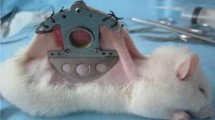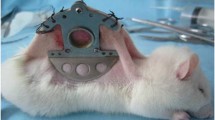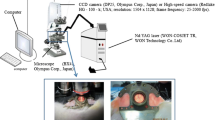Abstract
Laser treatment is the most effective therapy in dermatology for vascular skin disorders, such as port-wine stains (PWS). Changes in heat-induced absorbance in blood must be determined for accurate numerical simulation and implementation of multi-pulse laser therapy for treatment of PWS. Thermally induced absorbance changes in hemoglobin in blood were compared in vitro between slow water bath heating and fast heating irradiated by using sub-millisecond Nd:YAG laser. Blood composition at different temperatures was calculated by comparing blood absorption spectra with those of pure HbO2, Hb, and metHb at room temperature. Blood absorbance to heat energy were categorized into three stages distinguished by metHb and coagulation points, which are the validity and security thresholds of the optimized therapy, respectively. Rapid laser heating can distinctively enhance blood absorbance by photochemically induced strong instability compared with slow heating at a constant temperature. Slow heating facilitates metHb point at 70 °C and coagulation point at 75 °C as the temperature of the water bath increases. However, the temperature at which metHb or coagulation point shifts to higher than 10 °C when pulses and fluence in laser irradiation change. Laser fluence less than 20 J/cm2 and more than 50 J/cm2 is unsuitable for laser treatment because of its low probability to coagulate vascular hyperplasia and high probability to damage normal tissues adjacent to target lesions, respectively. Few bubbles formed after mediate fluence is beneficial to minimize adverse side-effects. Considering blood absorbance, temperature evolution, and bubble formation, we recommend 30–40 J/cm2 and 2–4 Hz frequency as the optimal laser parameters in sub-millisecond Nd:YAG laser.












Similar content being viewed by others
References
Verkruysse W, Nilsson AMK, Milner TE, Beek JF, Lucassen GW, van Gemert MJC (1998) Optical absorption of blood depends on temperature during a 0.5 ms laser pulse at 586 nm. Photochem Photobiol 67(3):276–281
Randeberg LL, Daae Hagen AJ, Svaasand LO (2002) Optical properties of human blood as a function of temperature. Proc SPIE 4609:20–29
Randeberg LL, Bonesrønning JH, Dalaker M, Nelson JS, Svaasand LO (2004) Methemoglobin formation during laser induced photothermolysis of vascular skin lesions. Lasers Surg Med 34:414–419
Li D, Chen B, Wu WJ, Wang GX, He YL, Ying ZX (2015) Experimental study on the vascular thermal response to visible laser pulses. Lasers Med Sci 30:135–145
Anderson RR, Parrish JA (1981) Microvasculature can be selectively damaged using dye lasers: a basic theory and experimental evidence in human skin. Lasers Surg Med 15:263–276
Li D, He YL, Wang GX, Wang YX, Ying ZX (2013) A new model of selective photothermolysis to aid laser treatment of port wine stains. Chin Sci Bull 58(3):416–426
Jia H, Chen B, Li D, Zhang Y (2015) Boundary discretization in the numerical simulation of light propagation in skin tissue: problem and strategy. J Biomed Opt 20(2):025007
Zhang Y, Chen B, Li D, Wang GX (2015) Efficient and accurate simulation of light propagation in bio-tissues using the three-dimensional geometric Monte Carlo method. Numer Heat Tr A-Appl 68:827–846
Binzoni T, Leung TS, Giust R, Rüfenacht D, Gandjbakhche AH (2008) Light transport in tissue by 3D Monte Carlo: influence of boundary voxelization. Comput Meth Programs Biomed 89:14–23
Jia WC, Tran N, Sun V, Marinček M, Majaron B, Choi B, Nelson JS (2012) Photocoagulation of dermal blood vessels with multiple laser pulses in an in vivo microvascular model. Lasers Surg Med 44:144–151
Pfefer TJ, Barton JK, Chan EK, Ducros MG, Sorg BS, Milner TE, Nelson JS, Welch AJ (1996) A three-dimensional modular adaptable grid numerical model for light propagation during laser irradiation of skin tissue. IEEE J Sel Top Quantum Electron 2:934–942
Shen H, Wang G (2010) A tetrahedron-based inhomogeneous Monte Carlo optical simulator. Phys Med Biol 55(4):947–962
Bosschaart N, Edelman GJ, Aalders MCJ, van Leeuwen TG, Faber DJ (2014) A literature review and novel theoretical approach on the optical properties of whole blood. Lasers Med Sci 29(2):453–479
Verkruysse W, van Gemert MJ, Smithies DJ, Nelson JS (2000) Modelling multiple laser pulses for port wine stain treatment. Phys Med Biol 45(12):197–203
Barton JK, Frangineas G, Pummer H, Black JF (2001) Cooperative phenomena in two-pulse, two-color laser photocoagulation of cutaneous blood vessels. Photochem Photobiol 73(6):642–650
Chen B, Li D, Wu WJ, Wang GX (2014) Theoretical investigation on thermal responses of port wine stain lesions to 585 nm, 595 nm and 1064 nm lasers. 10th International Conference on Cellular and Molecular Biology, Biophysics and Bioengineering (BIO ’14), Istanbul, Turkey
Wu WJ, Li D, Wang GX, Wang YS, Chen B (2013) Dynamic optical absorption characteristic of human blood in visible- and near-infrared light with variable temperature. CIESC J 64(4):1157–1162 (in Chinese)
Li D, Wang GX, He YL, Kelly KM, Wu WJ, Wang YX, Ying ZX (2013) A two-temperature model for selective photothermolysis laser treatment of port wine stains. Appl Therm Eng 59:41–51
Kimel S, Choi B, Svaasand LO, Lotfi J, Viator JA, Nelson JS (2005) Influence of laser wavelength and pulse duration on gas bubble formation in blood filled glass capillaries. Lasers Surg Med 36:281–288
Kelly KM, Choi B, McFarlane S, Motosue A, Jung B, Khan MH, Ramirez-San-Juan JC, Nelson JS (2005) Description and analysis of treatments for port-wine stain birthmarks. Arch Facial Plast Surg 7:287–294
Leonid I, Stuart NJ, Rox AR (2009) Treatment of hypertrophic and resistant port wine stains with a 755 nm laser: a case series of 20 patients. Lasers Surg Med 41(6):427–432
Groot D, Rao J, Johnston P, Nakatsui T (2003) Algorithm for using a long-pulsed Nd:YAG laser in the treatment of deep cutaneous vascular lesions. Dermatol Surg 29(1):35–42
Yang MU, Yaroslavsky AN, Farinelli WA, Flotte TJ, Rius-Diaz F, Tsao SS, Anderson RR (2005) Long-pulsed neodymium: yttrium aluminum-garnet laser treatment for port-wine stains. J Am Acad Dermatol 52:480–490
Mordon S, Brisot D, Fournier N (2003) Using a “non uniform pulse sequence” can improve selective coagulation with a Nd:YAG laser (1.06 μm) thanks to met-hemoglobin absorption: a clinical study on blue leg veins. Lasers Surg Med 32(2):160–170
Niemz MH (2007) Laser-tissue interactions: fundamentals and applications, 3, Enlarged Editionth edn. Springer, Berlin
Zijlistra WG, Buursma A, van Assendelft OW (2000) Visible and near infrared absorption spectra of human and animal haemoglobin: determination and application. CRC Press, VSP, Zeist
Sardar DK, Zapata BM, Howard CH (1993) Optical absorption of untreated and laser-irradiated tissues. Lasers Med Sci 8:205–209
Barrera FJ, Yust B, Mimun LC, Nash KL, Tsin AT, Sardar DK (2013) Optical and spectroscopic properties of human whole blood and plasma with and without Y2O3 and Nd3+:Y2O3 nanoparticles. Lasers Med Sci 28:1559–1566
Black JF, Wade N, Barton JK (2005) Mechanistic comparison of blood undergoing laser photocoagulation at 532 and 1,064 nm. Lasers Surg Med 36(2):155–165
Jia W, Choi B, Franco W, Lotfi J, Majaron B, Aguilar G, Nelson JS (2007) Treatment of cutaneous vascular lesions using multiple-intermittent cryogen spurts and two-wavelength laser pulses: numerical and animal studies. Lasers Surg Med 39(6):494–503
Suthamjariya K, Farinelli WA, Koh W, Anderson RR (2004) Mechanisms of microvascular response to laser pulses. J Investig Dermatol 122:518–525
Author information
Authors and Affiliations
Corresponding author
Ethics declarations
Conflict of Interest
The authors declare that they have no conflict of interest.
Funding
This study was funded by the National Natural Science Foundation of China (grant number 51336006).
Ethical approval
All procedures performed in studies involving human participants were in accordance with the ethical standards of the institutional and/or national research committee and with the 1964 Helsinki declaration and its later amendments or comparable ethical standards.
Informed consent
Informed consent was obtained from all individual participants included in the study.
Rights and permissions
About this article
Cite this article
Jia, H., Chen, B. & Li, D. Dynamic optical absorption characteristics of blood after slow and fast heating. Lasers Med Sci 32, 513–525 (2017). https://doi.org/10.1007/s10103-017-2143-8
Received:
Accepted:
Published:
Issue Date:
DOI: https://doi.org/10.1007/s10103-017-2143-8




